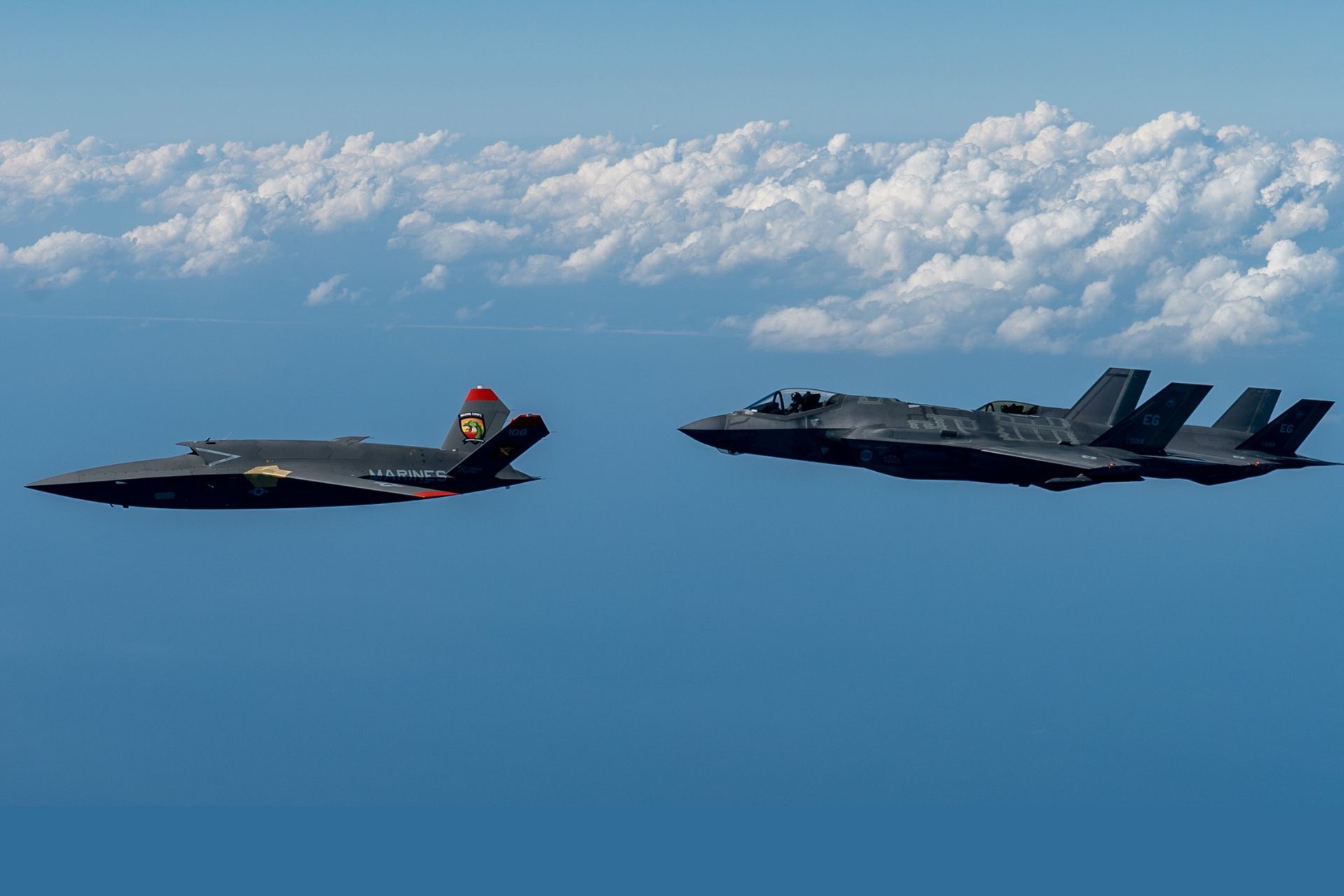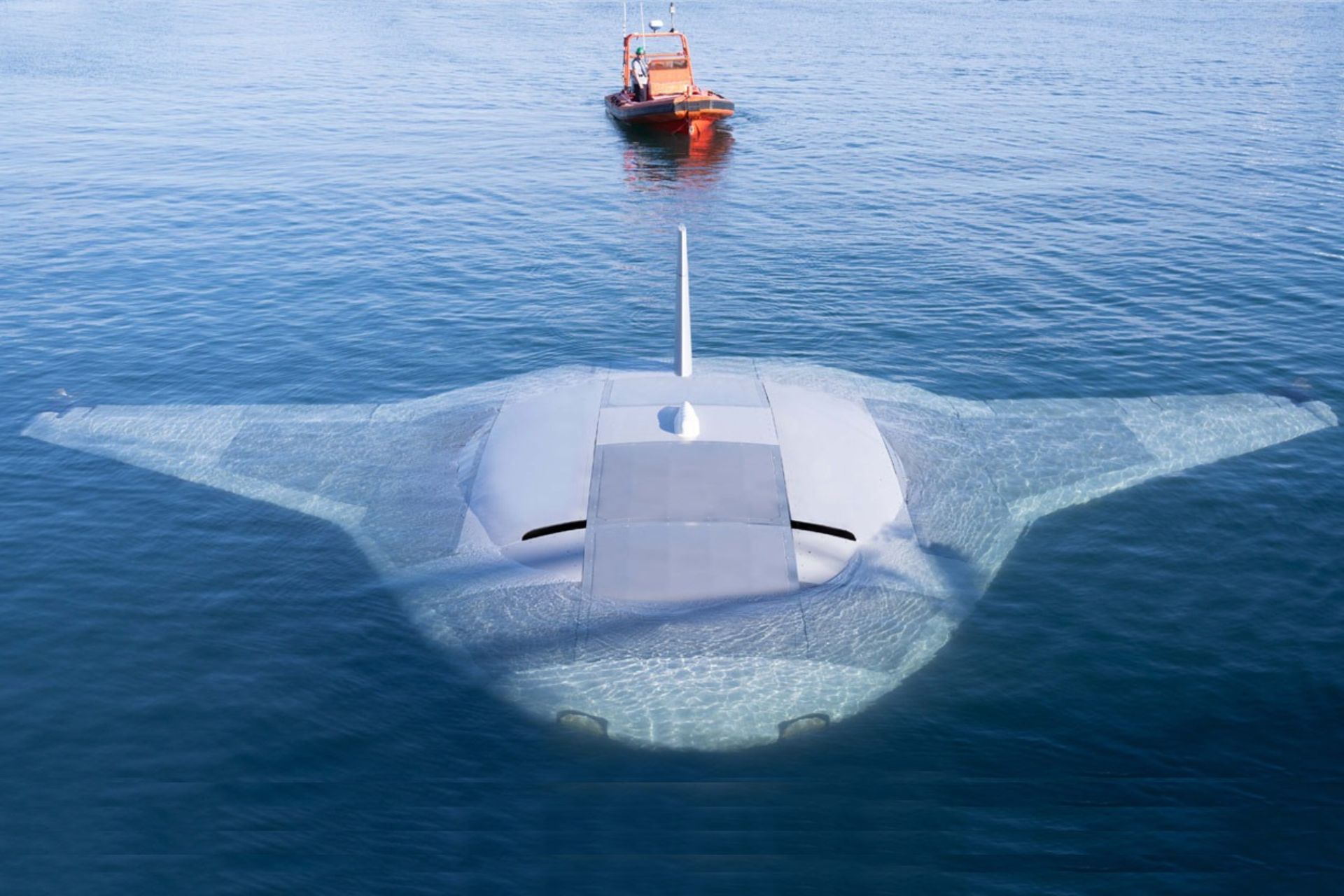Breaking News
Strategic Importance of Unmanned Systems in US Military Strategy to Counter China’s Rising Power in Indo-Pacific.
In an era where the Indo-Pacific region has become a significant strategic concern, China’s expansion and military ambitions are prompting the United States to reconsider its defense approach. The rapid modernization of China's military, particularly through the development of Anti-Access/Area Denial (A2/AD) systems, aims to limit U.S. and allied intervention capabilities in strategic areas such as the South China Sea and the Taiwan Strait.
Follow Army Recognition on Google News at this link

With a range of over 4,800 km, the XQ-58A Valkyrie can operate over long distances without being detected, which is crucial in countering China’s A2/AD systems (Picture source: US DoD)
In response, the U.S. is intensifying the integration of unmanned systems, shifting towards an integrated deterrence strategy that spans land, maritime, air, space, and cyberspace domains. These unmanned systems, especially drones, offer unique advantages in this strategically vital region.
The MQ-9 Reaper, a versatile aerial combat drone, is a key example of U.S. capabilities in the Indo-Pacific. It not only performs extended surveillance missions but also executes precision strikes against enemy targets over long distances. Its ability to operate for more than 24 hours and carry a wide array of weaponry makes it a valuable asset for maintaining U.S. presence over vast oceanic regions where ground bases are limited.
In a conflict scenario in the Indo-Pacific, where distances are great and response times critical, the Reaper can play a vital role by providing real-time intelligence and striking key targets without exposing human pilots to risk.
The MQ-25 Stingray adds a new dimension to U.S. capabilities by offering an aerial refueling solution. The vast distances of the Pacific make prolonged missions complex, requiring frequent refueling operations. The Stingray enables combat aircraft such as F-35s or F/A-18s to stay in mission longer, which is essential for maintaining rapid response capabilities in disputed areas like the South China Sea. This autonomous tanker also reduces U.S. reliance on fixed bases, which could be vulnerable to Chinese missile strikes in a conflict.
Another significant asset in the U.S. strategy for the region is the XQ-58A Valkyrie, a stealth drone designed to accompany manned combat aircraft as a "loyal wingman." Developed by Kratos Defense, the Valkyrie can operate autonomously or support aircraft like the F-35 by conducting electronic warfare, surveillance, or strike missions.
With a range of over 4,800 km, it can operate over long distances without being detected, which is crucial in countering China’s A2/AD systems. The XQ-58A is also attritable, meaning it is inexpensive enough to be deployed in large numbers, increasing saturation against enemy air defenses.

On the underwater front, Northrop Grumman’s autonomous drone, the Manta Ray, plays a strategic role by conducting prolonged missions at sea, such as monitoring critical maritime routes, detecting mines, or conducting underwater reconnaissance (Picture source: Northrop Grumman)
On the underwater front, Northrop Grumman’s autonomous drone, the Manta Ray, plays a strategic role by conducting prolonged missions at sea, such as monitoring critical maritime routes, detecting mines, or conducting underwater reconnaissance. In the Indo-Pacific, where maritime routes are vital to global trade, the Manta Ray’s ability to remain submerged for extended periods and carry out discreet missions enhances U.S. maritime superiority, enabling the monitoring and securing of commercial routes in contested areas like the Strait of Malacca and the South China Sea.
China, on the other hand, is bolstering its capabilities with drones like the CH-4 and the Wing Loong II, which serve similar purposes as the American Reaper. These drones are used for surveillance and strikes in the region, allowing China to extend its military influence without directly engaging in conflicts.
Additionally, China is developing underwater drones such as the Hailong and Haishen, enhancing its ability to operate below the surface in contested areas, thus strengthening its A2/AD strategy in regions like the Paracel or Spratly Islands.

Haishen 6000 Unmanned Underwater Vehicle, Airshow China 2022, Zuhai. (Picture source: weibo)
In conclusion, the integration of unmanned systems into U.S. military strategy to counter China’s rising power in the Indo-Pacific is crucial for several reasons. These systems, whether aerial, maritime, or underwater, allow the U.S. to maintain a continuous presence in the region without exposing personnel to high risks.
Additionally, by deploying drones like the XQ-58A Valkyrie, the U.S. can complicate China’s military calculations by saturating defenses with autonomous, low-cost systems while improving refueling and surveillance capabilities over vast distances. In a region where China seeks to assert control, these unmanned systems provide the U.S. with operational flexibility and significant deterrent power, strengthening its position in the Indo-Pacific and ensuring the security of its allies and partners.


























